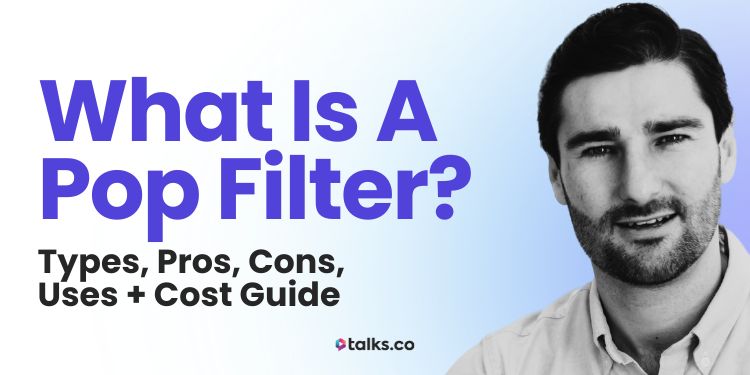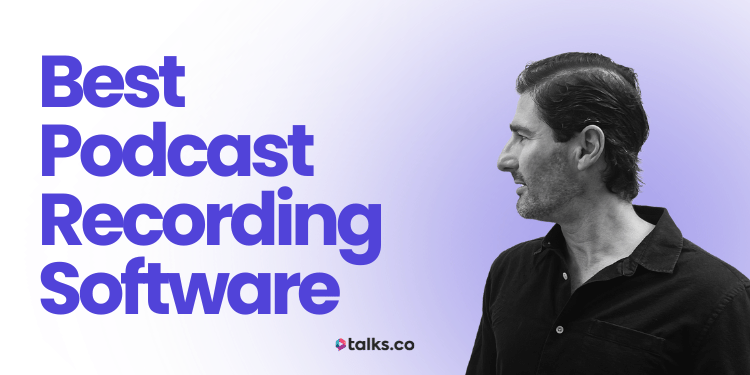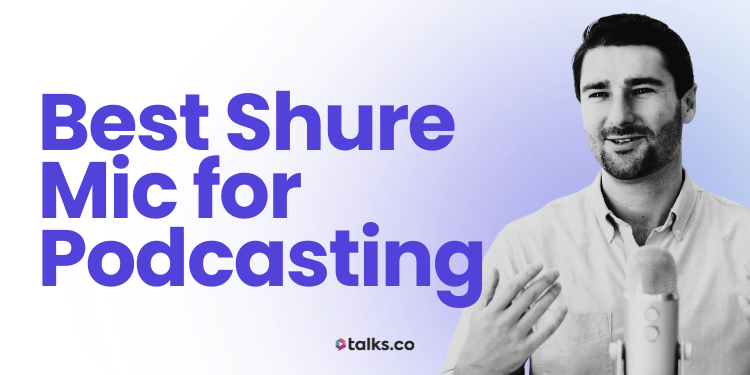Ever hit record, start talking, then cringe at the playback?
Those sharp P sounds and bursts of air? That’s your mic picking up plosives. Quick blasts from words like power, practice, or podcast. It’s distracting and sounds rough.
Wondering what a pop filter is, how it works, or if you need one? You’re in the right place.
This guide breaks down what a pop filter does, the types, what they’re made of, how to set one up, and which to pick for your mic, setup, or budget. There’s even a DIY option if you’re just getting started.
I’ve recorded in closets, open rooms, and pro studios. Used gear from five bucks to five grand. One thing stays the same: the right tools make your voice sound sharp.
Let’s get you there.
What Is a Pop Filter?
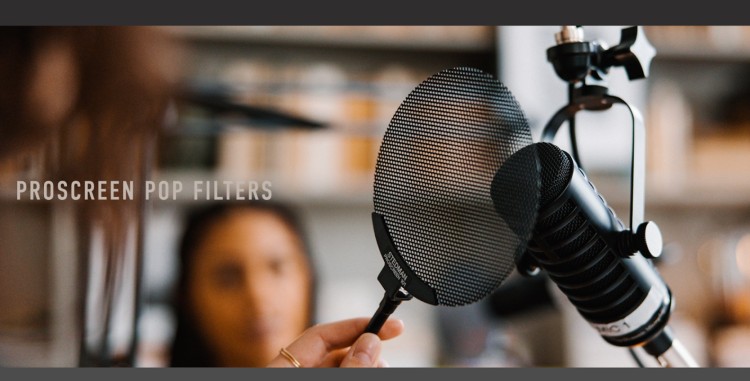
A pop filter is a simple screen that sits between you and your microphone. Its job is to soften or block out harsh plosive sounds. Those bursts of air from certain consonants like P, B, or T that can cause loud, distracting pops in your recording.
It doesn’t change your voice. It doesn’t boost your mic quality. It just stops the stuff that ruins a clean take.
What is a pop filter for a microphone?
It’s a layer made to protect your mic from plosives and moisture.
When you speak directly into a mic without a filter, your breath hits the diaphragm of the microphone fast and hard. That’s what creates that thump or popping sound in the audio.
A pop filter spreads the fast-moving air out before it hits the mic, so you get cleaner, more controlled sound.
What is a pop filter used for?
Pop filters are used in all types of podcasts, voiceovers, streaming, and recording vocals. Anywhere you’re close to the mic and want clean sound, a pop filter helps.
It’s not just about audio quality. It saves time in editing and gives you a more professional feel on the first take.
What is a pop filter good for?
It’s good for stopping distractions in your audio. It helps your voice come through clearly without sudden spikes from plosives. It also protects your mic from saliva, which can build up over time and damage the mic’s internals.
Bottom line: if you’re recording your voice, a pop filter helps you sound better, save time, and take care of your gear.
What Does a Pop Filter Do?
Pop filters cut out harsh plosive sounds and protect your mic from direct hits of air. Simple tool, big impact.
A pop filter:
- Tames plosives: Stops bursts of air from words like “people” or “practice” from hitting the mic.
- Prevents distortion: Keeps your audio from clipping or spiking mid-sentence.
- Saves editing time: Reduces the need to clean up sharp pops or retake lines.
- Protects your mic: Blocks saliva and moisture from getting into the mic capsule.
What does a pop filter device filter out?
Pop filters aren’t noise-cancelling magic, but they do one job really well: stop vocal bursts from wrecking your sound like:
- P sounds: Strong plosives from Ps create air blasts that slam the mic.
- B sounds: Similar force to Ps, often causes low-end thumps in recordings.
- T and D sounds: Softer but still punchy enough to trigger distortion up close.
- Moisture: Spit happens. The filter catches it before it hits the gear.
How does a pop filter work?
It works by breaking up the airflow between your mouth and the mic, slowing it down without changing your voice.
- Mesh screen diffuses air: Spreads out your breath before it reaches the mic.
- Blocks direct hits: Stops harsh bursts from hitting the mic capsule head-on.
- Lets sound pass through: Your voice stays natural, only the air gets filtered.
- Mounts close to the mic: Sits between your mouth and the mic at 1-2 inches away.
Why Use a Pop Filter?
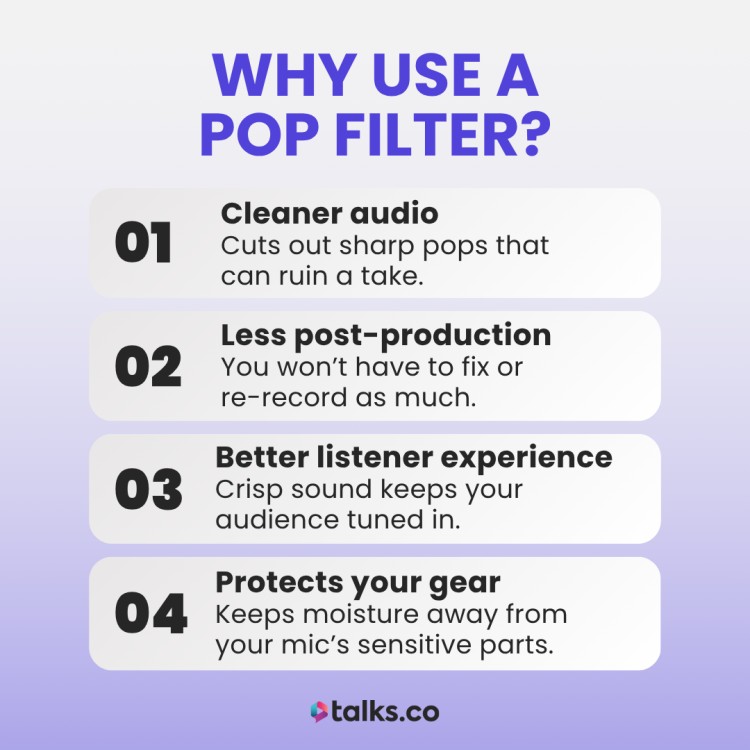
If you’re serious about sounding clear, consistent, and professional, a pop filter belongs in your podcast equipment bundle. It’s one of the easiest upgrades you can make to your podcast room setup.
- Cleaner audio: Cuts out sharp pops that can ruin a take.
- Less post-production: You won’t have to fix or re-record as much.
- Better listener experience: Crisp sound keeps your audience tuned in.
- Protects your gear: Keeps moisture away from your mic’s sensitive parts.
Is a pop filter necessary?
Not always, but if you’re speaking close to the mic, it’s a smart move.
- Close-mic recording: If your mouth’s near the mic, you need one.
- Loud talkers: Strong delivery? You’re likely hitting plosives even with the best podcast microphones.
- Condenser mic users: These mics pick up everything, including pops.
Are pop filters worth it?
Yes. For the cost and effort, few tools do more to clean up your sound.
- Low cost, high return: Most pop filters cost under $30, even less if DIY.
- Immediate impact: You’ll hear the difference from your very next take.
- Long-term use: One filter can last years with proper care.
Does a pop filter make a difference?
Big time. You might not notice until you hear a recording without one.
- Before-and-after clarity: Pops are sharp, harsh, and distracting without it.
- Better first takes: Less popping means fewer retakes.
- Stronger presence: A pop-free voice sounds smoother and more confident.
Do pop filters work?
Yes, as long as you’re using it right and your mic technique’s solid.
- Correct placement matters: 1-2 inches from the mic, 3-6 inches from your mouth.
- Does one job, does it well: It filters plosives, nothing more, nothing less.
- Used by experts: Studios, voice actors, streamers, podcasters, they all use them.
3 Pop Filter Types
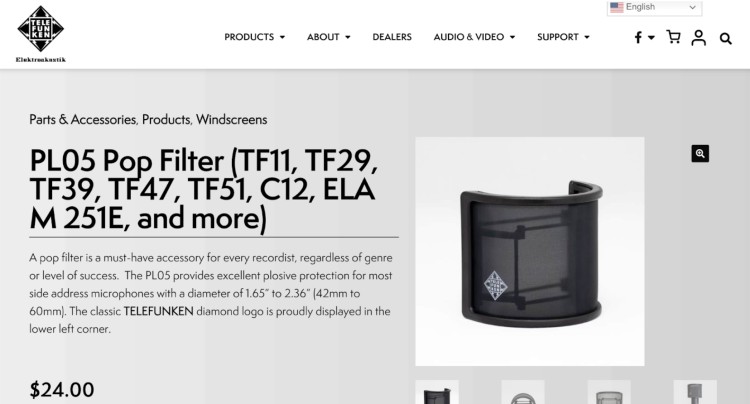
Pop filters come in a few different builds, and the one you choose depends on how you record, what mic you use, and how much control you want over your sound.
- Nylon mesh filters: The most common type used to prevent plosives and popping noises. Affordable, flexible, and does an optimal job cleaning your audio.
- Mesh metal filters: Tougher, easier to clean, and often more precise at redirecting airflow without blocking higher frequencies.
- Foam covers (windscreens): These pop filters are placed directly onto the mic. Good for light plosive control and blocking air pressure, but not as effective for close-up vocalist work.
What are pop filters made of?
Materials affect both sound quality and durability. Here’s what you’ll usually find:
- Woven nylon mesh: Soft, stretchy fabric that disperses air well. Can wear out over time.
- Perforated metal: Stronger build with a smooth finish. Easier to clean and lasts longer.
- Acoustic foam: Absorbs sound and air. Great for general noise reduction, but not ideal for controlling plosives alone.
Which pop filter is better?
It depends on your setup, mic, and how you record. Here’s a quick breakdown:
- For studio podcasting: Go with metal or double-layer nylon for max control.
- For casual recording: A single-layer mesh or foam windscreen will do the job.
- For on-the-go setups: Foam covers are light, compact, and easy to pack.
The best pop filter is the one that keeps your audio clean without getting in the way. Start simple, and upgrade if you need more control.
How to Choose the Best Pop Filter
Not every pop filter works for every mic or setup. Here’s how to choose the right one without wasting time or money.
- Mic type matters: Condenser microphones are more sensitive so go for better plosive control. Dynamic mics can get away with a foam cover or lighter screen to reduce or eliminate plosive consonants and unwanted popping sounds.
- Check your space: In a treated studio room? Most metal pop filters or pop screens will do. In a kitchen, bedroom, or echoey setup? Go for a higher-end mesh or metal microphone pop filter.
- Distance from the mic: Up close or sitting right in front of the microphone? Get a filter that mounts well and doesn’t budge when attached to the microphone. Standing back? A foam cover might be enough to reduce the blast of air hitting it.
- Mounting style: Boom arm, desk, or microphone stand, make sure it clips onto your recording equipment cleanly and stays out of your face.
- Budget range: $10-30 gets you something solid. Foam is cheaper. Metal mesh costs more but lasts longer and wipes clean.
Start simple. If you’re still catching pops, then upgrade.
Pop Filter vs No Pop Filter
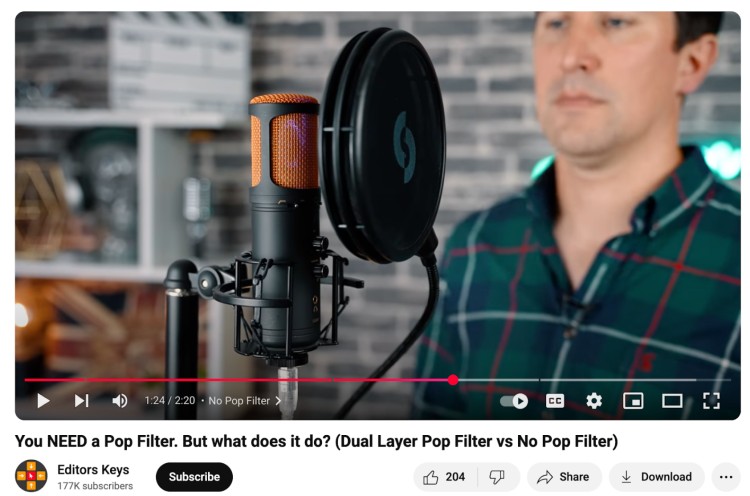
Whenever you record a podcast, using pop filters makes a bigger difference than you think. And the best way to hear it is to, well, hear it.
Watch this video: You NEED a Pop Filter. But what does it do?.
- At 1:00, he records without one. You’ll catch every harsh pop on P and B sounds.
- At 1:25, he clips on the filter and runs the same line. Smoother. Cleaner. No blasts.
That’s the job of a pop filter: cutting out the rough edges so your voice sounds clean and solid.
Want proof? Try it yourself. Record one take with, one without. You’ll hear it straight away.
How to Make a Pop Filter
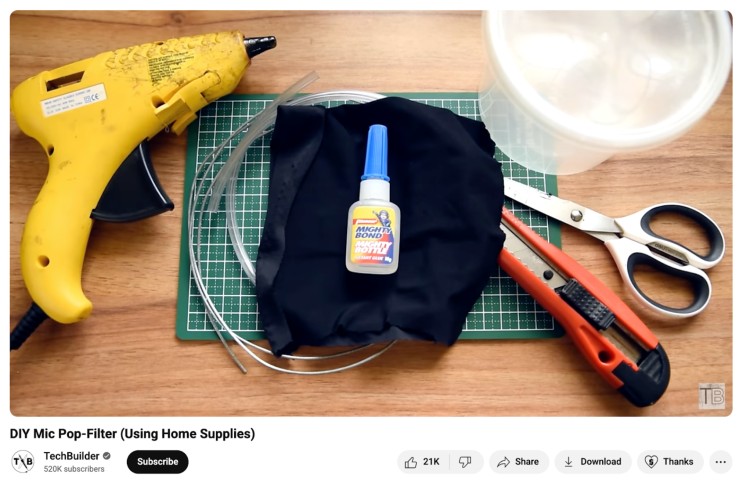
No pop filter? No problem. You can make one at home with a few basic items. It won’t look flashy, but it’ll do the job.
What you’ll need:
- An old wire coat hanger (or any bendable wire)
- A pair of tights or pantyhose
- Scissors
- Tape or zip ties
- A desk clamp, boom arm, or something to mount it on
Steps:
- Bend the wire into a circle. Around 4-6 inches wide.
- Stretch the fabric over it. Cut a section of tights and pull it tight across the loop.
- Secure the fabric. Wrap the ends and fasten with tape or zip ties.
- Attach it to your stand. Use more tape or a clamp to mount it a few inches from your mic.
Done. It won’t win design awards, but your audio input will sound cleaner instantly.
How to install a pop filter
The use of a pop filter is only effective if it’s placed right. Here’s how to set it up for your recording studio:
- Position the filter 1-2 inches from the mic. That gives enough space for the pop shield to catch and eliminate plosives before they hit the mic.
- Sit 3-6 inches from the filter. Close enough to sound natural, far enough to avoid mouth noises and heavy breaths.
- Line it up with your mouth. Speak straight through the center for even airflow and clean sound.
- Secure it so it stays put. No wobbly arms or droopy screens. Make sure it holds position during the whole session.
How to clean a pop filter
Filters catch more than just air. Over time, they collect dust, spit, and bacteria. A quick clean keeps them fresh.
For mesh or metal filters:
- Remove the filter from the arm.
- Gently rinse with warm water and mild soap.
- Let it air dry fully before reattaching.
For foam covers:
- Soak in warm, soapy water.
- Rinse well and squeeze gently. Don’t twist or stretch.
- Leave out to dry completely (usually 24 hours).
Clean your filter every few weeks if you record often. It keeps your setup hygienic and your sound consistent.
Pop Filter Price
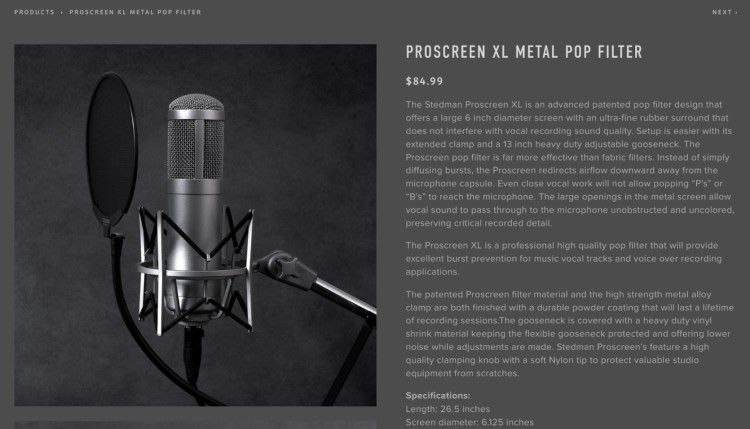
Pop filters come in a range of prices depending on the material and build quality. Here are some reliable options to consider:
- Budget (under $15): Good for casual setups or beginners. Aokeo Pop Filter ($12.99) has a basic nylon mesh with a flexible arm and clamp. InnoGear Pop Filter ($9.99) gives you a double-layer mesh and solid gooseneck.
- Mid-range ($15-$30): Better quality for regular use. Dragonpad USA ($21.04) offers wide nylon coverage with a sturdy metal frame you can attach even to a Blue Yeti mic.
- Top-tier ($50+): Built for professional and long-term use. Stedman Proscreen XL ($84.99) has a metal mesh that’s easy to clean and built to last.
Start with podcast equipment for beginners that fits your setup and budget. You can always upgrade if your gear or goals grow.
Where to buy a pop filter
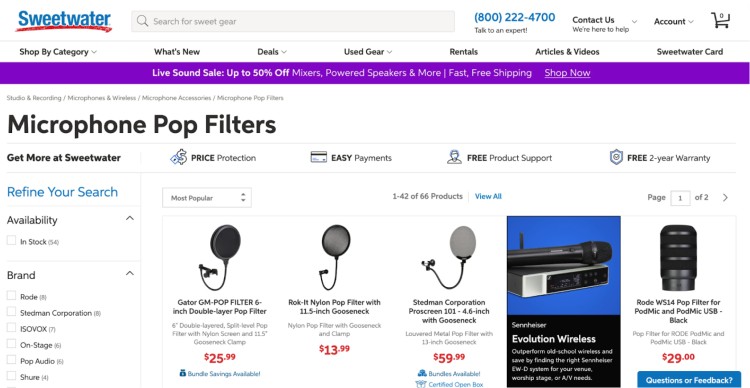
You can find these pop filters at trusted retailers like:
- Amazon: Wide selection, fast shipping, and user reviews to help you decide.
- Guitar Center: Good for trying gear in person if you have a store nearby.
- Sweetwater: Specialist audio retailer with expert support and quality brands.
- B&H Photo Video: Large stock of pro audio gear with clear specs.
No Pops, Crackles, or Hisses
So, what is a pop filter? It’s that simple piece of gear that stops those annoying pops and air blasts from ruining your sound. Getting it right makes your voice come through clean and sharp every time you hit record.
No matter your budget or setup, using a pop filter is an easy win for better audio. But great sound alone won’t grow your show. You need guests who bring energy and stories that keep people hooked.
Sick of chasing guests who ghost you? Sign up for free on Talks and discover fresh voices that make your show impossible to skip.
Book Better Guests With Your Free Talks Creator Profile Today
